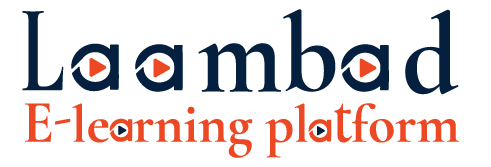R Studio Data analyze masterclass: From Beginner to Advanced
Offered by
Benaadir Research, Consultancy & Evaluation Center (BRCE)

-
LevelAll Levels
-
Total Enrolled98
-
Duration7 hours
-
Last Updated03/12/2025
-
CertificateCertificate of completion
📘 Course Overview
This course introduces learners to R programming and RStudio as powerful tools for data analytics, visualization, and statistical modeling. Beginning with the basics of R syntax and data structures, students will progress through data wrangling, exploratory data analysis, statistical foundations, and predictive modeling techniques. The course emphasizes hands-on practice with real-world datasets and projects drawn from business, social sciences, public health, and sports analytics.
By the end of the course, learners will be able to confidently analyze, visualize, and interpret data using R, preparing them for roles in data analysis, research, and business intelligence.
🎯 Why Learn This Course?
- Industry Demand: R is widely used in research, academia, and industries like finance, healthcare, and marketing analytics.
- Practical Skills: Gain end-to-end skills, from cleaning raw data to building predictive models and communicating results with impactful visualizations.
- Career Growth: Opens pathways to careers such as Data Analyst, Research Analyst, Statistician, and Business Intelligence Specialist.
- Research & Reporting: Essential for professionals and students conducting academic or applied research who need tools for advanced statistical analysis.
👥 Who Should Enroll?
This course is designed for:
- University students in statistics, economics, computer science, or social sciences.
- Professionals in business, finance, healthcare, education, and NGOs looking to enhance their data analysis skills.
- Researchers and academics who want to use R for data-driven insights and publishing.
- Beginners in analytics who want a structured pathway into data science.
📌 What Will Be Learned?
Learners will:
- Set up R and RStudio, manage packages, and write scripts.
- Work with data structures (vectors, lists, factors, data frames).
- Perform data wrangling, cleaning, and transformation using dplyr, tidyr, and related packages.
- Conduct exploratory data analysis (EDA) with summary statistics, visualizations, and grouped insights.
- Understand statistical foundations (distributions, hypothesis testing, confidence intervals).
- Build and interpret linear and logistic regression models.
- Apply regression diagnostics and model selection techniques.
- Work on real-world projects in multiple domains.
- Create impactful data visualizations with ggplot2 and export results for professional reporting.
🔑 Pre-requisites
- No prior R knowledge required – the course starts from the basics.
- Basic computer literacy (installing software, navigating interfaces).
- Foundational math and statistics knowledge (mean, variance, probability basics) is recommended.
- Familiarity with spreadsheets (Excel or Google Sheets) is a plus, but not mandatory.
Material Includes
- 33 HD Videos
- 5 downloadable Datasets
- 1 downloadable Course note
Course Curriculum
Module 1: Quick Start with R & RStudio
-
Lesson 1. Installing R and RStudio
08:18 -
Lesson 2. Navigating the RStudio interface
10:38 -
Lesson 3. Writing and running your first script
05:39 -
Lesson 4. Using the console and script effectively
03:35 -
Lesson 5. Installing essential packages (tidyverse, ggplot2, dplyr)
06:35
Module 2: Data Structures for Analytics
-
Lesson 1. Vectors, lists, and factors
18:59 -
Lesson 2. Data frames
06:43 -
Lesson 3. Indexing, slicing, and filtering
06:35 -
Lesson 4. Data wrangling basics with dplyr and tidyr
09:36 -
Lesson 5. Handling missing data
06:24
Module 3: Exploratory Data Analysis (EDA)
-
Lesson 1. Summary statistics and distribution shapes
04:22 -
Lesson 2. Frequency tables and cross-tabulations
08:45 -
Lesson 3. Visualization tools: histograms, boxplots
09:29 -
Lesson 4. Grouped analysis with group_by() and summarise()
06:35 -
Lesson 5. Detecting outliers and anomalies
10:59
Module 4: Data Cleaning & Transformation
-
Lesson 1. Importing data from CSV, Excel, and web sources
07:36 -
Lesson 2. Handling NA, duplicates, and out-of-range values
11:46 -
Lesson 3. Creating new variables with mutate()
04:42 -
Lesson 4. Merging and joining datasets
04:42
Module 5: Statistical Foundations
-
Lesson 1. Types of variables (categorical vs. numerical)
14:45 -
Lesson 2. Measures of central tendency and variability
15:26 -
Lesson 3. Probability distributions: normal, binomial, Poisson
14:00 -
Lesson 4. Hypothesis testing: t-test, chi-square
11:11 -
Lesson 5. Confidence intervals and p-values
06:25
Module 6: Correlation & Simple Linear Regression
-
Lesson 1. Scatter plots and correlation coefficients
07:49 -
Lesson 2. Pearson vs. Spearman correlation
03:30 -
Lesson 3. Fitting a simple linear regression model
09:13 -
Lesson 4. Interpreting coefficients and R-squared
06:42 -
Lesson 5. Diagnostic plots and residual analysis
09:57
Module 7: Multiple Linear Regression
-
Lesson 1. Adding multiple predictors
06:22 -
Lesson 2. Checking multicollinearity (VIF)
08:16 -
Lesson 3. Model selection: backward, forward, stepwise
11:22 -
Lesson 4. Interaction terms and polynomial regression
08:56 -
Lesson 5. Model interpretation and evaluation
05:35
Module 8: Logistic Regression & Classification
-
Lesson 1. Binary outcomes and logistic models
12:55 -
Lesson 2. Odds ratios and log-odds interpretation
06:42 -
Lesson 3. Model fitting and prediction with real world example
04:12
Student Ratings & Reviews
About the instructors

Offered by

BRCE waa xarun ka shaqaysa horu marinta iyo barashada arimaha la xariira xirfadaha Casriga ah oo ku salaysan Technology-ga.

